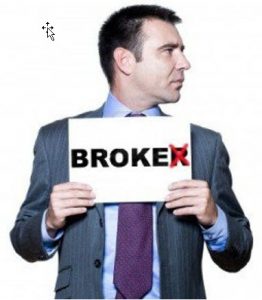How to invest in financial markets

After reading a dozen books on trading, all possible articles on the many trading forums (such as andlil.com for example) and trading for 6 months on demo accounts, you feel that it is time to start. That is when an important question arises. You now need to know how to place your buy and sell orders.
There are intermediaries to place your orders and it is required to use them, these are brokers. There are a multitude of brokers, who specialise to a greater or lessor extent in certain financial products, and who you can open an account with.
Various types of brokers
Contents
Your bank may allow you to open an account to place your financial market orders. These days, everything is done via the internet where it is now easy to place orders. Your bank could therefore serve as a broker for you, but if you are an active trader, this is not a good choice. Banks are actually the most expensive brokers. Compared with specialised brokers, banks offer a service with much higher management fees.
Using specialised brokers is still the most credible solution, as the laws of competition lead to lower prices. Specialised brokers sometimes offer prices between 3 and 25 times lower than those of the banks. In concrete terms, to place an order, a bank might charge you €250 while a specialised broker would offer the same transaction for €10.
In addition to high transaction costs, banks also add multiple custodian fees, quarterly or annually, that the majority of brokers do not charge.
There are specialised brokers in nearly all financial products. You can find specialised brokers for CFDs, such as PRT CFDS, and even brokers specialised in binary options, forex, futures, etc. For binary options and forex, you must be careful. There are a lot of dubious brokers: beware of scams.
However, choosing a broker is not so simple. You need to be aware that brokers are paid for each order that you place. In the majority of cases, they will offer you a fixed price, which applies to each order placed. Brokers can sometimes offer you a monthly subscription, that you will need to make profitable by trading as much as possible.
To be cost-effective, choosing a broker is always better than placing orders through your bank.
How to place orders on financial markets
Once you have finished your market analysis, then it’s time to move into action. When you connect to your broker's site to place an order, you need to choose what type of order to place. You therefore must learn to read a quote and more generally, the order book.
An asset’s price is actually a balance, at a given time, between the prices offered by buyers and those offered by sellers. A multitude of factors influence this price range, for example, new economic information, or a fluctuation in interest rates.
You need to be aware of the order books available on the trading platforms. You can also see the latest transactions executed charts and tick by tick lists. You need to put forward the most advantageous order possible for yourself, while keeping in mind that it should stay within market prices. The broker will deal with placing orders for you, and will find a counterparty who agrees with your price requirement.
You also need to choose the type of order, between:
Market order
The advantage of this type of order is that it is faster than all the others. It is useful for securing assets quickly or getting rid of them if you think that a price fall is imminent. The speed of this type of order is due to the fact that the transaction is carried out at the available market price at that moment. In a very liquid market this is not a problem, there are rarely unpleasant surprises. In a market with low liquidity, it is usually better to avoid using this type of order.
Limit order
A limit order allows you to fix an acceptable limit at which you are prepared to buy or sell an asset. It allows you to protect yourself against high price volatility. The order will not be executed if the price exceeds the limit. The more stringent you are, the less chance there is of the order being executed.
Stop orders
This order allows you to place a signal to buy or sell dependant on possible price fluctuations. Imagine that you own shares and that you estimate that an important threshold for this share is €50. You anticipate that if this share’s price decreases to €50, then it is better to sell.
When the price of an asset meets or passes the stop level you have set, the order will then be executed at market price. At this point, a stop order has the same risks as a market order (the stop can be executed at a less favourable price than the order price if there is a price gap or a low level of liquidity for example).
OCO orders
This allows you to place two orders simultaneously. When one is executed, the other is cancelled. For example, say we want to buy if the price increases above an important resistance level (because we think the price will continue to increase if the resistance is broken), or we want to sell if it breaks below an important support level (because we think price will continue to decrease if the support is broken) – in that case we could place an OCO order (only the buy order or the sell order will be executed, the other will be cancelled).
Linked orders
Linked orders let you combine several orders together. As a simple example, say you set a limit order to buy at certain price (ex : 90 €). Some trading platforms will let you associate a target limit order at a different price (ex: 100 €) and also a stop order (ex: 85 €) to your initial order, so that if the initial order is executed, the target and stop are immediately placed. If you enter a position at 90 € for example, then the price increases to 100 €, the linked target order would be executed allowing you to exit the market with a gain. On the other hand, if you enter the market at 90 €, then the price decreases to 85 €, the linked stop order would be executed and you would exit the market with a loss.
Choosing order validity
Once you have chosen the type of order, you must choose the validity of the order.
You can select "valid today", the order is then valid for one day, or "valid up to a certain date" or even “good-till-cancelled”. The good-till-cancelled order is then valid for an unlimited period unless it is cancelled.

Why do I trade CFDs and Futures at the same time?
Why do I trade with ProRealTime CFD and ProRealTime Futures?
Try a Free Demo Account or a Real acount






No comment for How to invest in financial markets Be first !